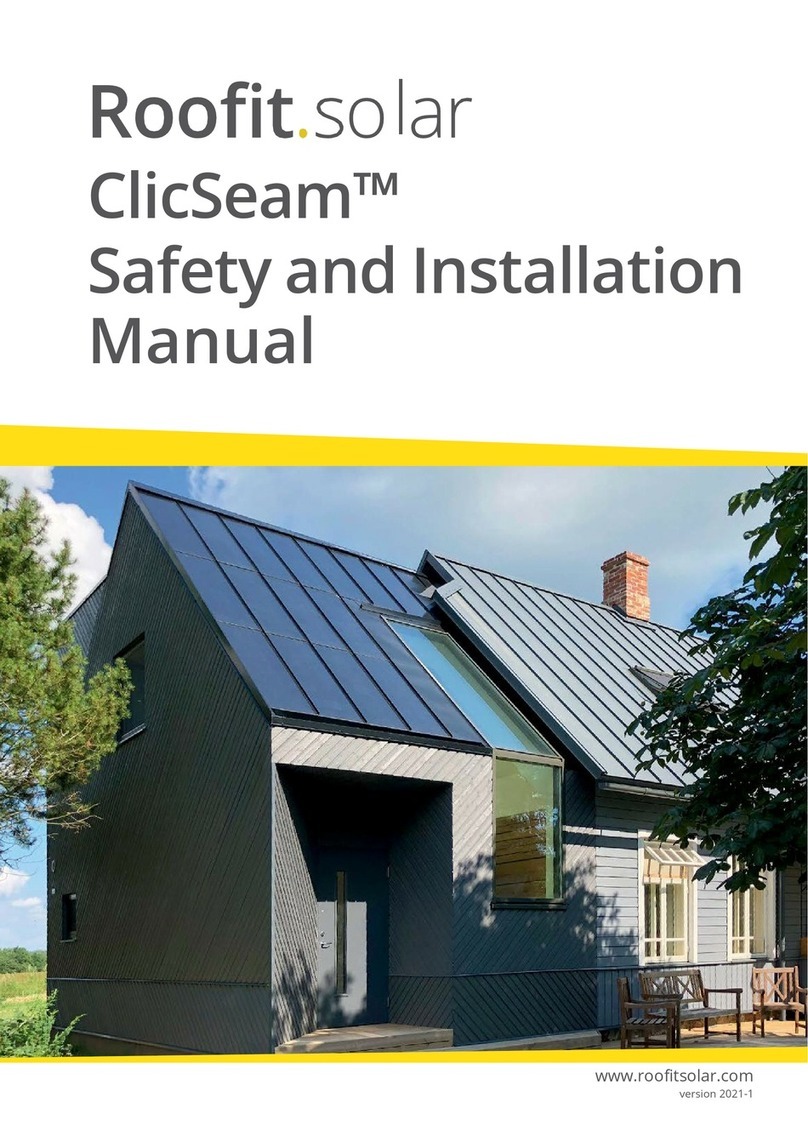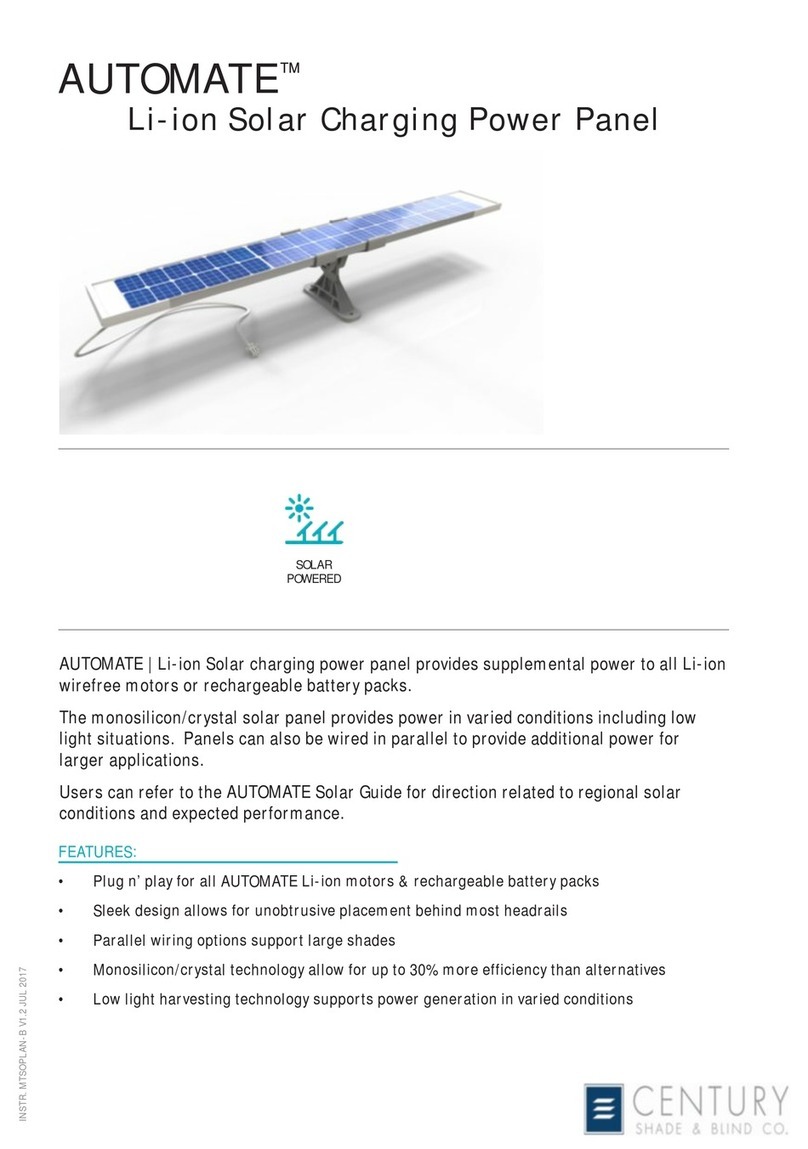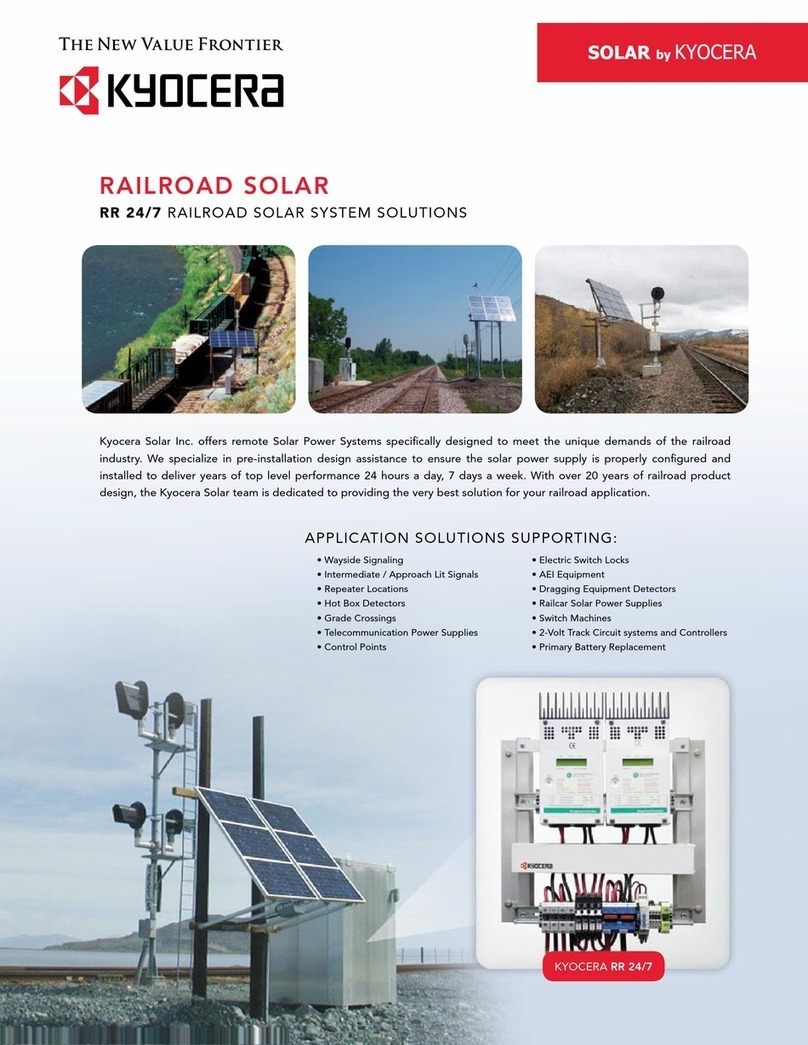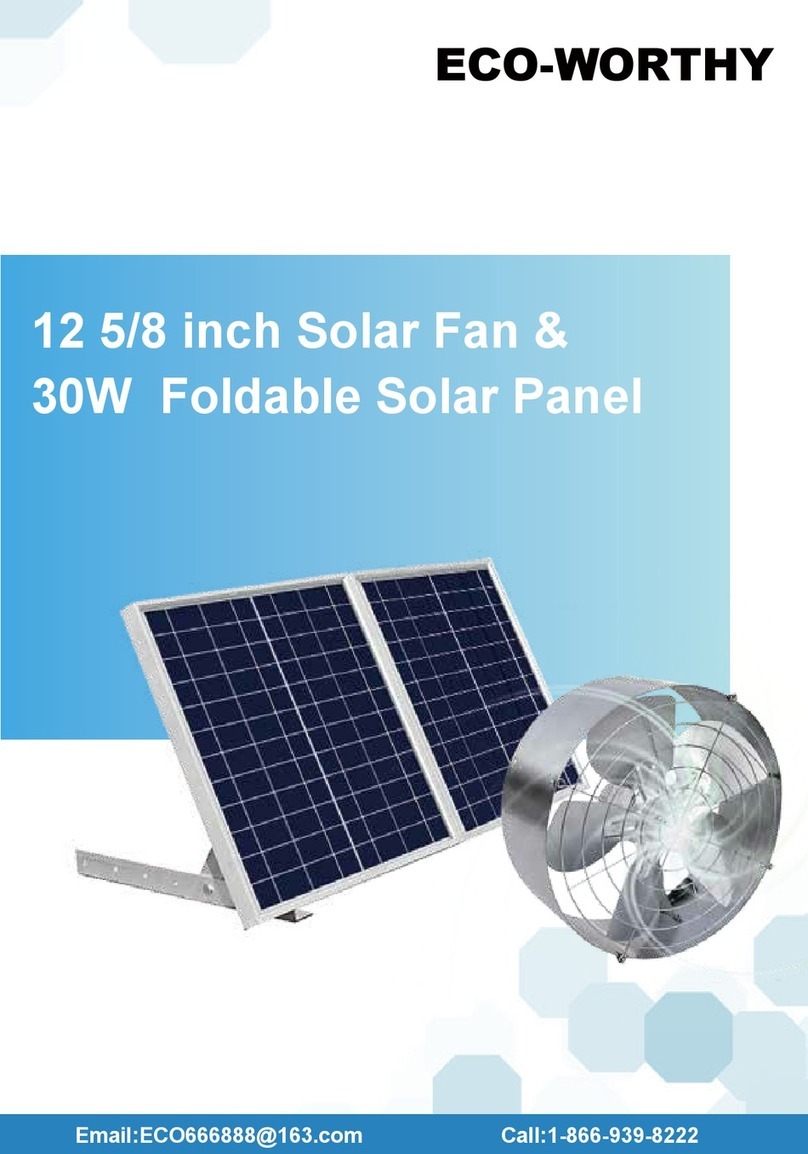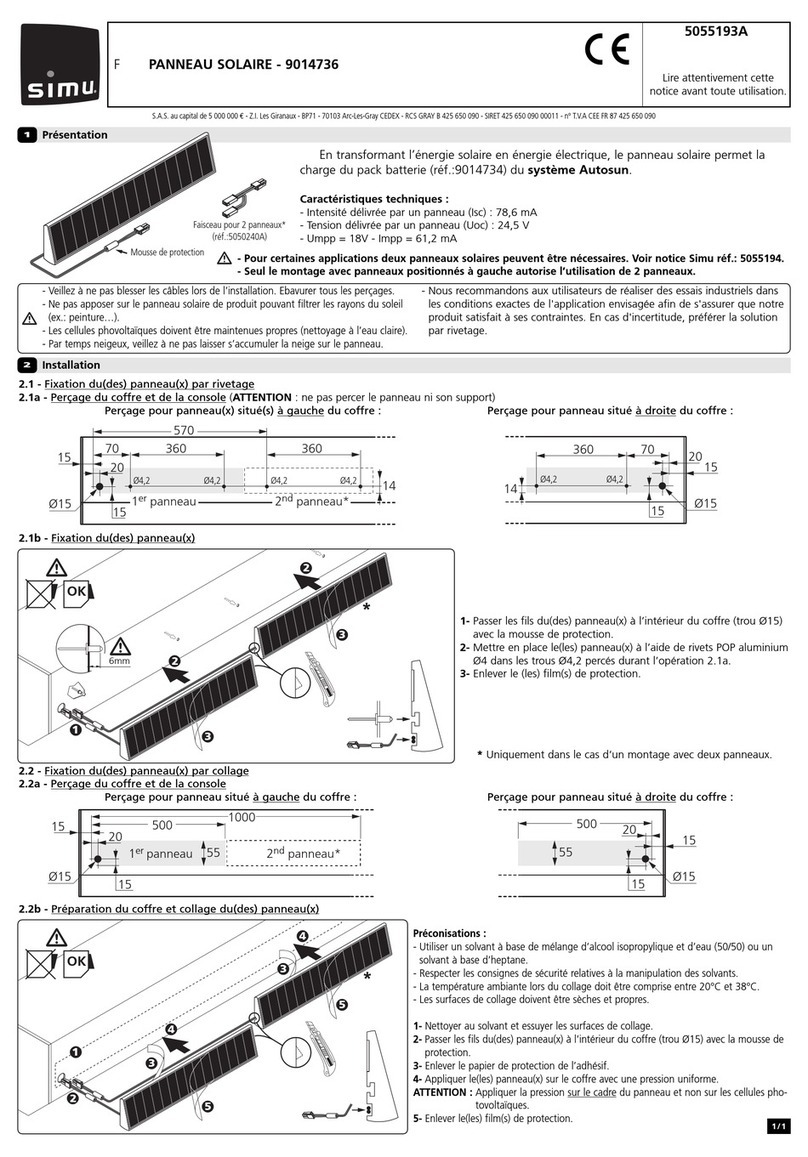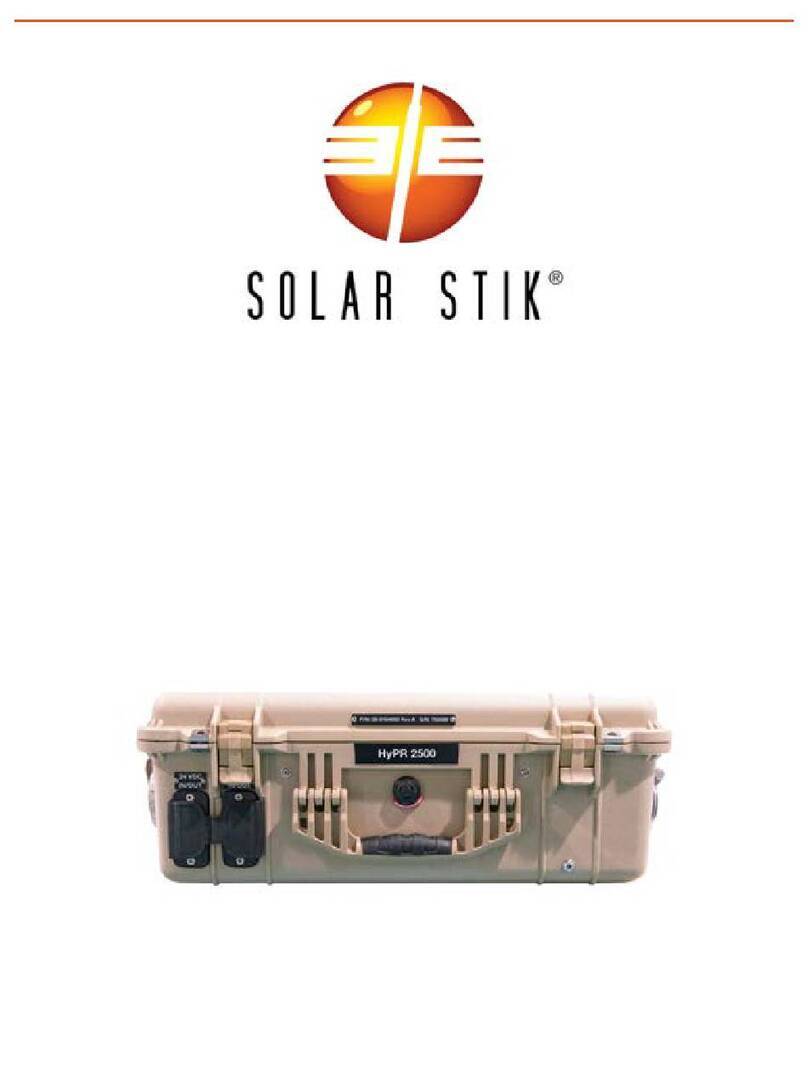DEVDEEP ELECTRICALS Solar User manual

Solar Power Owner’s Manual
DEVDEEP ELECTRICALS
Roof Top Grid Connected Solar PV System

Introduction .................................................................................................................................................................................................. 3
Owner Safety for Maintenance .................................................................................................................................................................... 3
How Your DEVDEEP SOLAR System Works ............................................................................................................................................. 4
System Performance.................................................................................................................................................................................... 4
Operating Instructions ................................................................................................................................................................................. 5
Operating Safety Instructions ..................................................................................................................................................................... 5
Trouble Shooting.......................................................................................................................................................................................... 6
Maintenance of Solar PV System Equipments .......................................................................................................................................... 7
Important Reminder ..................................................................................................................................................................................... 8
Warranty........................................................................................................................................................................................................ 8
AccreditedInstallerDetails........................................................................................................................................................................... 9
Expected System Performance................................................................................................................................................................... 9
Actual System Performance........................................................................................................................................................................ 9
Maintenance and Fault Log ....................................................................................................................................................................... 10
Inverter Details ........................................................................................................................................................................................... 11
Array Details ............................................................................................................................................................................................... 11
Disclaimer ................................................................................................................................................................................................... 12
Table of Contents

3
IMPORTANT:
To avoid risk of injury, DEVDEEP SOLAR strongly recommend
the services of a qualified
professional who is trained in occupational health and safety procedures, to clean solar
electricity panels.
Introduction
Congratulations on the purchase of your solar electricity system. Not only are you protecting
yourself from current and future price rises of electricity, you are also saving significant CO2
emissions which helps reduce global warming and climate change.
Your system is designed to meet all Indian Standard conditions, regulations and codes. Although
it is very low maintenance, it must always be remembered that the system generates electricity and
we strongly recommend that you do not attempt to service it yourself unless you are suitably qualified.
Your safety is our primary concern
.
Owner Safety for Maintenance
For your safety, we recommend that you do not attempt any servicing yourself unless you are
suitably qualified.
The solar panels work best when clean. Regular rainfall or washing with a hose will maintain their
cleanliness. If they do become excessively soiled they can be cleaned with cold water. DEVDEEP
SOLAR strongly recommend that you avoid climbing onto the roof and use the services of a qualified
professional who is trained in occupational health and safety procedures.
Shading of the solar panels will affect efficiency and performance. Plant and tree growth that may
cause shading at various times of the year, should be monitored and dealt with as required. Likewise,
leaves, bird droppings and other debris coming to rest either on or around the solar modules should
be carefully removed.
If you notice your system is not operating correctly, please check the TROUBLE SHOOTING
chapter on page 7 and if necessary call 9726879009 immediately and we will help you to diagnose
your problem and can arrange to send a technician to resolve it if necessary. If you need to shut
down the system, please follow these steps in this order
–
1.
Switch OFF the Solar Supply Main Switch in the Main Switchboard or Meter Box
2.
Switch OFF the AC Isolator and DC Isolator adjacent to the Inverter
Following these steps will safely isolate the solar array. To switch it back on, you simply reverse the
procedure.
Always remember that your system will be generating electricity during daylight hours and care
should always be taken to eliminate the risk of electric shock. Refer to the OPERATING INSTRUCTIONS
on page 5 for more information.

4
1
Inverter
2
ELECTRICITY
NETWORK
(GRID)
Meter
3
PV electricity
output (DC)
Electricity to
House (AC)
Grid
electricity
import
PV electricity export
How Your DEVDEEP SOLAR System Works
The following illustration and narrative explains how your solar electricity system works –
1.
The solar electric modules are usually fitted to the roof. The number of modules will depend on
the nominal size of your system and, collectively, they are known as the solar array. The solar
array converts sunlight into direct current (DC) electricity.
2.
The DC electricity is fed to the Inverter which is normally accessible at ground level. The Inverter
converts the DC electricity to Alternating Current (AC) electricity which is compatible with the
electricity supplied to your house from the grid. Most Inverters have a digital readout so you can
monitor information such as the amount of solar electricity produced, etc. Refer to the separate
Inverter owner’s manual for more information.
3.
Depending on Local Regulations, Your Solar system may be connected to the grid on a Net
Metering System. With Net Metering, only the Electricity not First consumed by the House will be
Exported to the Grid
.
If you have an Old Electro - Mechanical Meter (with the spinning disk), this will need to be replaced
with a Bi- Directional Meter able to record the electricity you both import and export.
Your Electricity Retailer will read your Meter monthly and Bill you for your electricity consumption.
Credit will be paid for Electricity exported to the grid at the rate of ₹3.24 per Kwh . This is known as a
Feed-In Tariff.
System Performance
During daylight hours, your system will be generating electricity at varying rates depending on the
amount of sunshine. The more sunlight falling on the solar array the more electricity is generated,
variable factors such as cloud cover, seasonal solar angle variations, shading or soiling of the solar
array will have an effect on the electricity output. Note that you do not need to change your energy
usage lifestyle to correspond with your solar system. Your energy consumption will be supplied by
both solar and the grid.

5
IMPORTANT NOTE:
Disclaimer of Liability: Despite the Instructions and Recommendations provided in this Manual,
the Actual use and maintenance of the Solar Power System is beyond the control of DEVDEEP
SOLAR. Therefore, DEVDEEP SOLAR does not assume any responsibility and expressly
disclaims Liability for Loss, Damage or Expense associated in any Way with the Installation,
Use, or Maintenance of the Solar Power System.
Operating Instructions
Your solar electricity system is designed for automatic operation without need for user
intervention. There are no moving parts or need for the owner to interact with its operation.
In the case of Mains Grid Supply Failure the Inverter will immediately and automatically be
disabled. This is known as “anti-islanding” and it protects linesmen from an electric shock from
your system when they assume the grid is “dead”. Once the grid power has been restored, the
Inverter will be automatically re-enabled.
If you notice your system is not operating correctly, please check the TROUBLE SHOOTING
chapter on page 6 and if necessary call 9726879009 Immediately and we will diagnose your problem
and send a technician to resolve it if necessary.
Operating Safety Instructions
•
Do not Attempt to Service the system unless you are Fully Qualified to do so. To service any
Electrical connection you have MUST be a Licensed Electrician.
•
All Service work must be carried out in strict compliance with all Local and National Electrical
Regulations and Standards.
•
Review and follow all Safety Instructions supplied with all components of your DEVDEEP
SOLAR electricity system. Further information can be found at
http://www.devdeepelectricals.com
•
Do not Attempt to Clean or Come in contact with the surface of a solar module with broken
glass. This could result in a Dangerous Electric Shock.
•
Be Aware that power may be present at any point in Electrical Circuits despite the Opening of
Circuit Breakers or Isolators.
•
Circuit Breakers can trip Automatically if problems occur. If the circuit breaker is switched
back to the closed or “on” position and it immediately trips back to the open or “off” position
there is a problem.
•
Appropriate Precautions must be taken when working on rooftops or at heights in accordance
with Local and National occupational health and safety regulations.

6
Trouble Shooting
The Inverter displays LED lights and/or screen displays to monitor the normal operation and fault
conditions of the system. The occurrence of a problem within the system will usually be indicated by
the Inverter. The Inverter user manual contains a trouble shooting chapter which will explain these
lights and displays.
Please Read the Trouble Shooting Chapter carefully and then precisely follow the Instructions
Given. If these fail, please call 9726879009 immediately and we can assist to Locate a Qualified
Technician to Resolve your Problem
.
PROBLEM POSSIBLE CAUSE RESOLUTION
In day Hours with
Good Solar
Radiation.
i)
Array Voltage Absent.
ii)
Array is at extremely Low/
High Voltage Condition.
iii)
Array breaker trip/off position.
Check Array Supply.
Check Array Supply Low/High
Voltage Condition.
Switch On Array Breaker, If It
Trip Contact us.
Inverter is
Supplying Power
to Load But
Power Import &
Export is not
Working.
i)
Grid Voltageabsent.
ii)
Grid is Extremely Low/High
Voltage
Condition.
iii)
Grid Breaker Trip/Off position.
iv)
Grid Contactor is not working.
v)
Grid Frequency is not in range.
vi)
No Sync-Conditions.
Check input Voltage, Check Grid
& System Fuses.
Check Grid Supply Low/High
Voltage Condition.
Switch on Grid Breaker, If It
Trips Again, Contact us.
Check Grid Contactor coil Fuse.
Check Grid Frequency Low /
High Condition.
Check Phase Rotation.
Output Under
Voltage
i)
Output Short Circuit.
ii)
Inverter Control Card Failed.
iii)
Driver Card Failed.
iv)
Driver Control Failed.
v)
Filter Capacitor Failed.
vi)
No Feed Forward Signal.
vii)
Hall Device Failed.
viii
)
IGBT Module Failed.
Check load is Proper or Not.
To Reset the Fault Press Reset
Switch on Front Mimic Display. If
Fault Repeats Contact us.
Output Over
Voltage
i)
Loss of Control Feedback.
ii)
Inverter Control Card Faulty.
To Reset the Fault Press Reset
Switch on Front Mimic Display. If
Fault Repeats Contact us.
Inverter Over
Temperature
i)
High Ambient Temp.
ii)
Output Overload.
iii)
Inverter Cooling Fan Failed.
iv)
Temp. Sensor Failed.
v)
Inverter Control Card Failed.
vi)
Ventilation Inputs Blocked.
Check Room Ventilation is
Proper or Not.
Reduce the Load.
Contact us.
Contact us.
Contact us.
Clean Ventilation Input by
Blower Fan.
DC Over Voltage
i)
Reverse Power Flow
ii)
Synchronization Failed.
iii
)
Inverter Control Card Failed.
To Reset the Fault Press Reset
Switch on Front Mimic Display. If
Fault Repeats Contact us.
Wound
Component OT
i)
High Ambient Temp.
ii)
Output overload
iii)
Wound component Cooling fan
Failed.
iv)
Temp. Sensor Failed.
v)
Inverter Card Failed.
vi)
Ventilation Inputs Blocked.
Check Room Ventilation is
Proper or Not.
Reduce the Load.
Contact us.
Contact us.
Contact us.
Clean Ventilation Input by
Blower Fan.

7
Maintenance of Solar PV System Equipments
We recommend carrying out periodic Maintenance for our Solar Power System. Followings are the
Guide Points for the Same.
Module Mounting Structure:
Quarterly Check Below Points:-
•Tightness of the all the fastener with proper torque with the use of the torque wrench.
•Galvanizing layer of the structure components.
•Foundation on which structure is installed.
•All the fasteners, nuts/ bolts must be free from corrosion.
•Module mounting on the structure, must be align & tight properly.
•Structure must be withstood with 150 Km/Hr. capacity of wind flow.
•SPV structures should be designed in such a way that all solar panels can be easily reached by
human hand for regular cleaning.
Solar Modules:
General Check List:
•Each structure should be facing south but tilted at an Angle From the Horizontal Ground Level. They
should be tilted from the horizontal at a degree equal to the latitude of the Site Location.
•All the structure should be located in such a way that no shadows of any adjoining trees or building or
structures fall on any solar panel at any time of the day.
•Space between two rows of solar structure should be at least twice of the height of the Solar panel
structure at the highest point of Tilt. This minimum space is required to avoid shadow of one row of solar
structure to fall on the row behind it.
•There must not be any obstacles near to PV Module installation area, So that shadow will affect the
generation.
•Do not step or walk on the Modules or else the warranty of the modules will be void.
•During the generation hours there should not be any shadow reflect on PV Modules as it will Create
Hotspot & Burn the Module.
Weekly:-
•All PV Modules must be washed with PURE WATER for the better Power Generation.
•Note: Please Do Not Wash or Clean the Module during Generation Hour (Between 8.30 AM To 5:00PM),
As it will REDUSE Life of the Module.
•All the modules must be free from Dust / Bird’s Drop, As It will Affect the Generation &
•Decrease The Efficiency of the Module.
Solar Inverter:
We Recommend Carrying the Periodic Maintenance of the System by Authorized Service Engineer.
Quarterly Check Below Points:-
•All Electrical Power Connection for Tightness.
•Verify the Grid, Output, Array Cabling and Its Termination.
•Check Inter Cell Connectors for Tightness and Corrosion on Terminals.
•Ensure the Ventilation and Cleanliness Surrounding the ESU.
•Clean Front Air Filters by using Blowers.
Yearly Check Below Points:-
•Apart from Above, Open the ESU and Check the Power Transformer Cable Connection.
•Working Condition of ESU Exhaust Fan.
•Physical Condition of DC Capacitors and AC Capacitors.

8
Other Electrical Accessories
•All the connection of cable terminals should be check at periodically interval.
•Insulation of cable should be check physically. It must not be damaged.
•Termination of cables at all the Points must be tight properly, if connection tends to heated up, it denotes
the loose connection.
Cables:
•All the connection of cable terminals should be check at periodically interval.
•Insulation of cable should be check physically. It must not be damaged.
•Termination of cables at all the Points must be tight properly, if connection tends to heated up, it denotes
the loose connection.
Earthing:
•There should ERT checking once in a year.
•Pouring water at Earthing area periodically.
•Connection & continuity of GI strips, there should not be any loose connection or damage of Earthing
Strips.
ABJ and ACDB:
•All electrical connection & termination of lugs must be check at periodically interval.
•Should be free from dust.
Important Reminder
Please keep this Owner’s Manual in a Safe and Easily Locatable Place Together with all other
documentation supplied with your system.
Warranty
In the case of a service being required, please make available all the documentation to the service technician.
Note that the manufacturers’ warranties may be voided if the system is serviced or interfered with by an unqualified
person.
Your solar electric system comes with the following warranties:
Solar Photovoltaic Modules
Refer to the warranty information contained in the documentation supplied with your solar electric modules.
Solar PV modules have a 25-year limited warranty. This means they are guaranteed to perform to 90% capacity for 15
years and 80% for the remaining 10 years. The module warranty is provided by the manufacturer of the modules.
Inverter
Refer to the warranty information contained in the documentation supplied with the Inverter. An Inverter
warranty is usually 5 years . The Inverter warranty is provided by the manufacturer of the Inverter.
Installation
Five years from the Date of Installation. The installation warranty is provided by the Accredited Installer, the
details of whom can be found on page 9 of this Manual.

9
Accredited Installer Details
(to be completed by accredited installer) As an accredited designer
/
installer of the PV systems
Name of Accredited Installer:
Address of Accredited Installer:
Declare That This Installation has been performed in Accordance with all Relevant Standards in Force at this date.
Contact phone numbers Signature of Accredited Installer:
Date of Installation and Commissioning:
Expected System Performance
(to be completed by accredited installer)
1.
Size of Solar Array in Kilowatts kW
2.
Maximum AC output of Inverter in Kilowatts kW
3.
Elevation angle Expected loss %
4.
Shading of solar array Expected loss %
5.
Expected Average Daily output of Solar Array in Kilowatt hours kWh
6.
Location of Inverter
7.
Location of PV array/s
Actual System Performance
(to be completed by owner)
Date of connection to the grid
E-Total reading on Inverter at end of year 1 Daily average kWh E-Total reading on Inverter
at end of year 2 Daily average kWh E-Total reading on Inverter
at end of year 3 Daily average kWh

10
Maintenance and Fault Log
Please do not climb above 2 meters to maintain solar modules without observing all OH&S
regulations. Use only clean water to clean solar modules, no detergents or solvents
.
Date Problem Remedy Electrician

11
Inverter Details
Make:
Model: Size:
Array Details
Module type
Model
SN:
SN:
SN:
SN:
SN:
SN:
SN:
SN:
SN:
SN:
SN:
SN:
SN:
SN:
SN:
SN:
SN:
SN:
SN:
SN:
SN:
SN:
SN:
SN:
SN:
SN:
SN:
SN:
SN:
SN:
SN:
SN:
SN:
SN:
SN:
SN:
SN:
SN:
SN:
SN:
VOC ARRAY 1
VDC
VOC ARRAY 2
VDC
VMP ARRAY 1
VDC
VMP ARRAY 2
VDC

12
Disclaimer
This solar system unit approaches to specified Safety Regulations. An Inappropriate usage may
cause Damage to Persons and Goods. Please Read this Manual Carefully before Maintenance of the
system and carry out the Maintenance procedures correctly. This manual provides guidelines for
Operation & Maintenance. DEVDEEP SOLAR is not responsible for any damages caused by using or
installing our products be it Personal Injury, Damage of Property, Prosecution (from a result of using our
products), legal fees or loss of earnings and whether the DEVDEEP SOLAR product was fitted correctly
as per this ‘Maintenance Guide’ or not.
| DEVDEEP SOLAR | www.devdeepelectricals.com |
+91-9726879009
Table of contents
Popular Solar Panel manuals by other brands

MSW
MSW S-POWER SYSTEM LIS 3000 PRO user manual
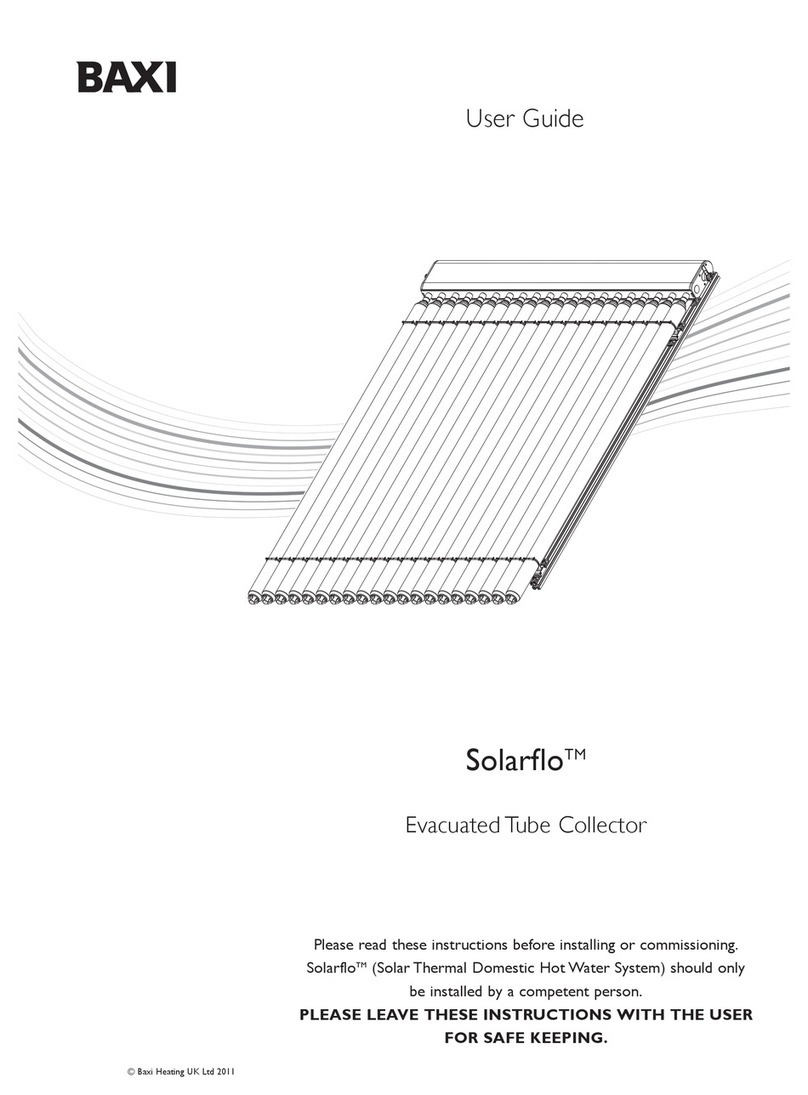
Baxi
Baxi Solarflo user guide
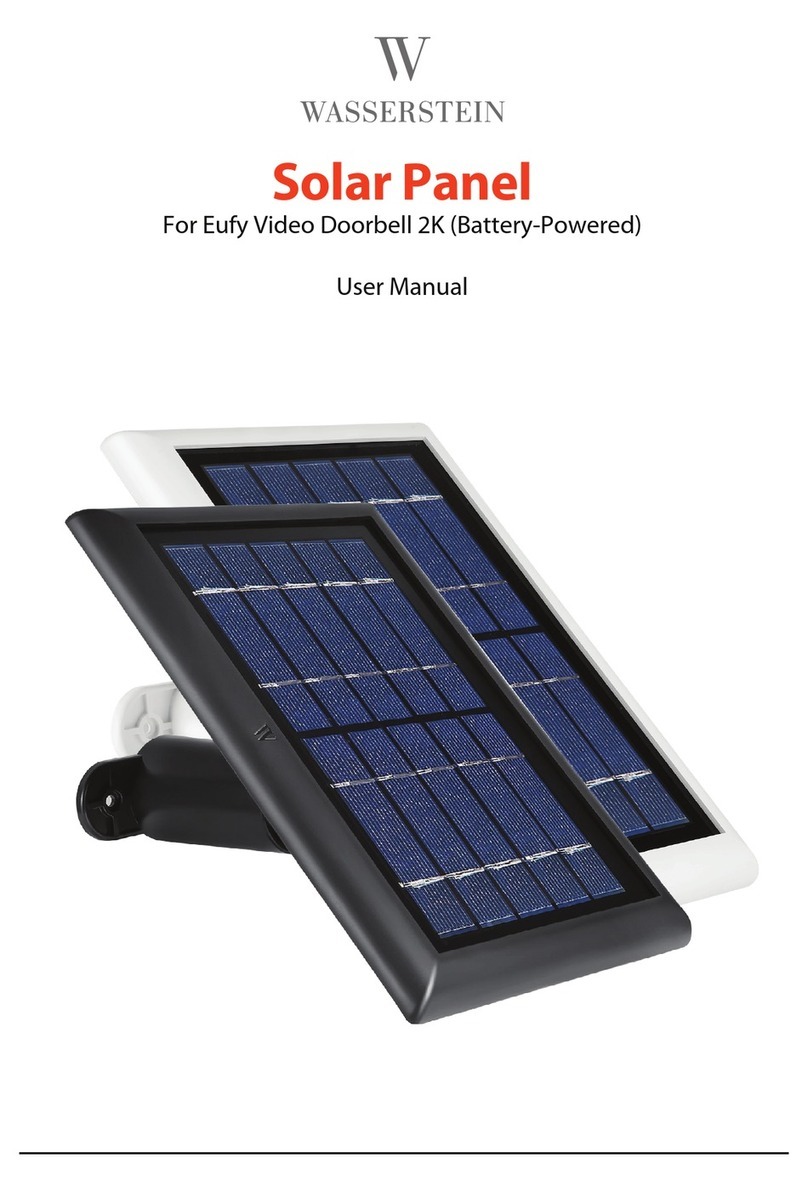
Wasserstein
Wasserstein R03 user manual
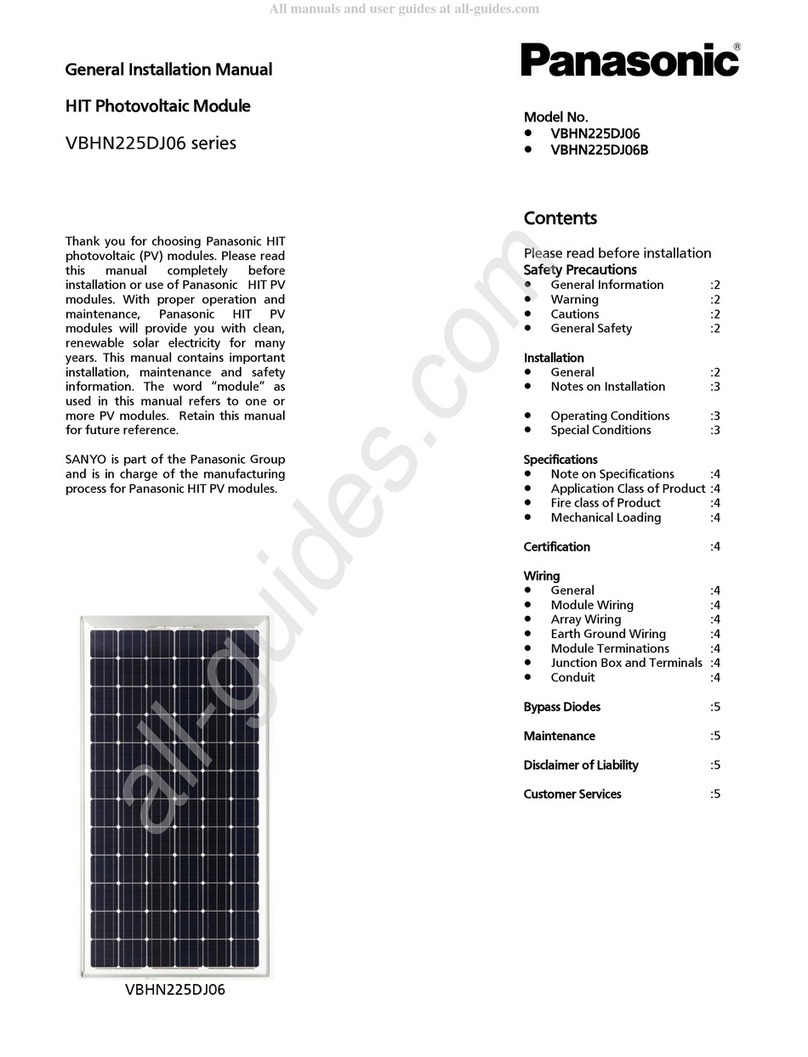
Panasonic
Panasonic VBHN225DJ06 Series General installation manual
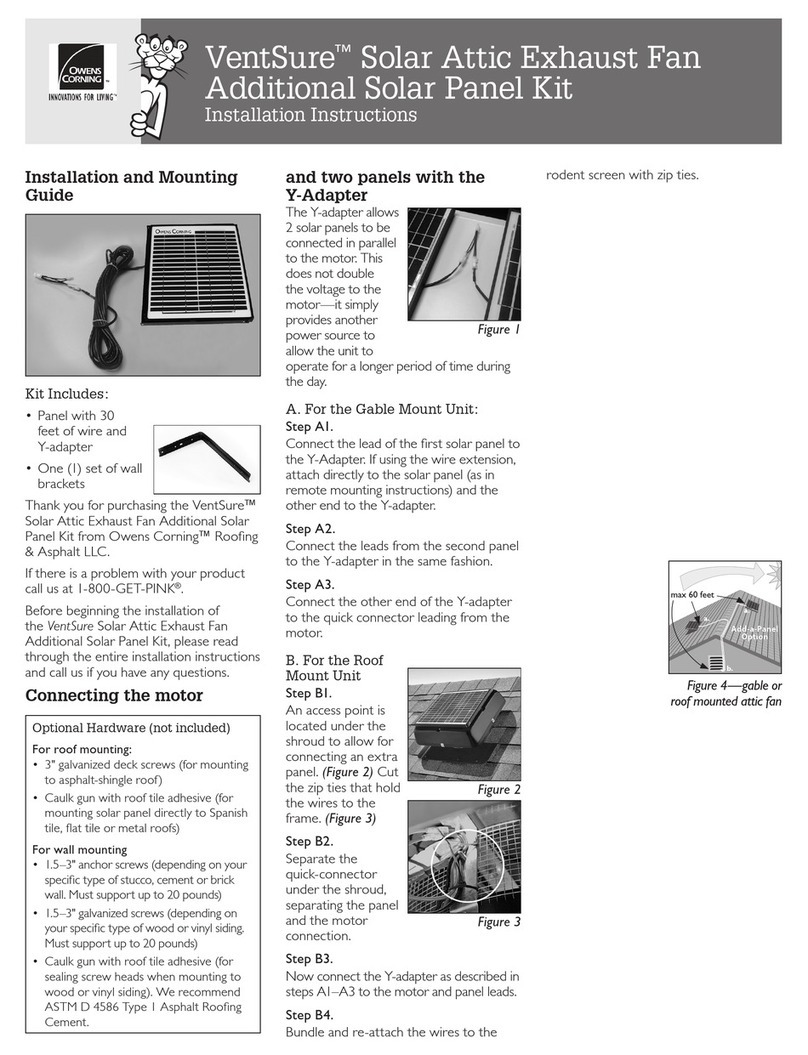
Owens Corning
Owens Corning VentSure Solar Attic Exhaust Fan Additional Solar Panel... installation instructions
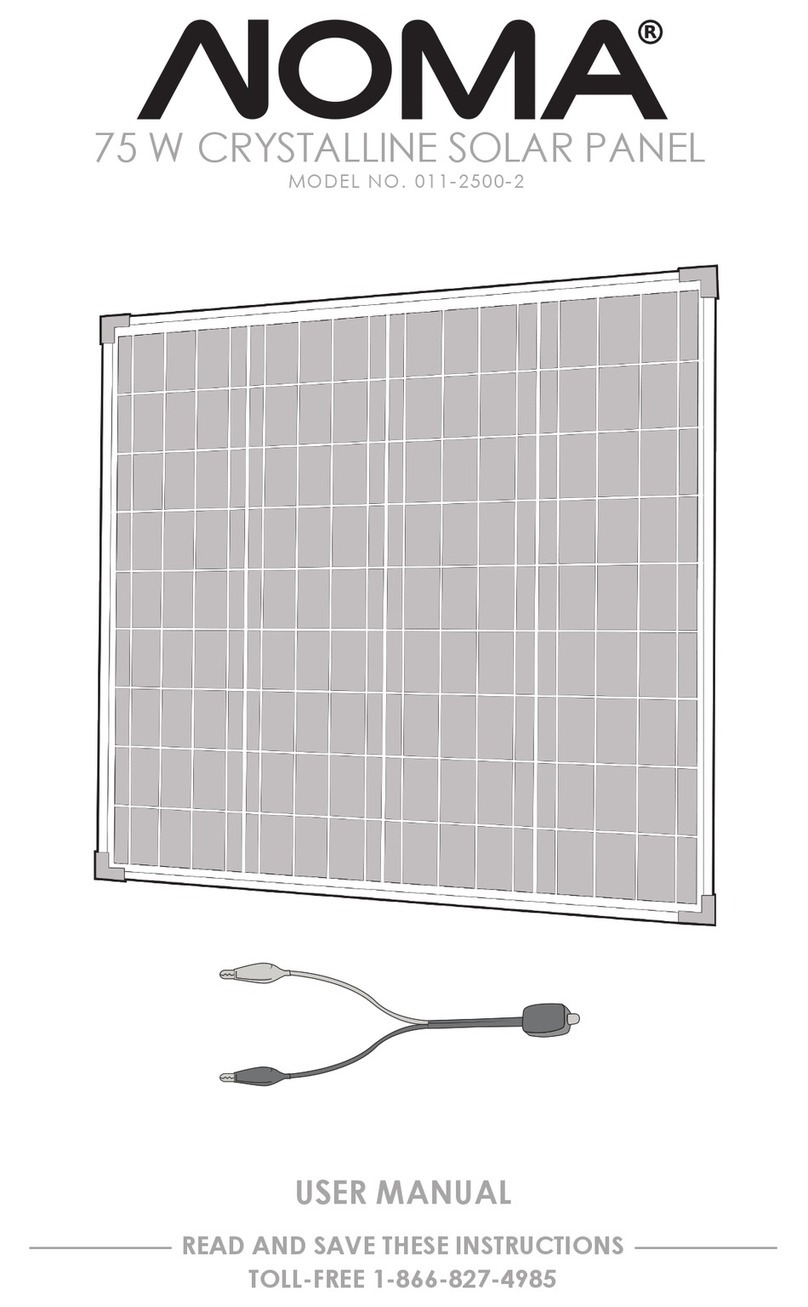
NOMA
NOMA 011-2500-2 user manual


